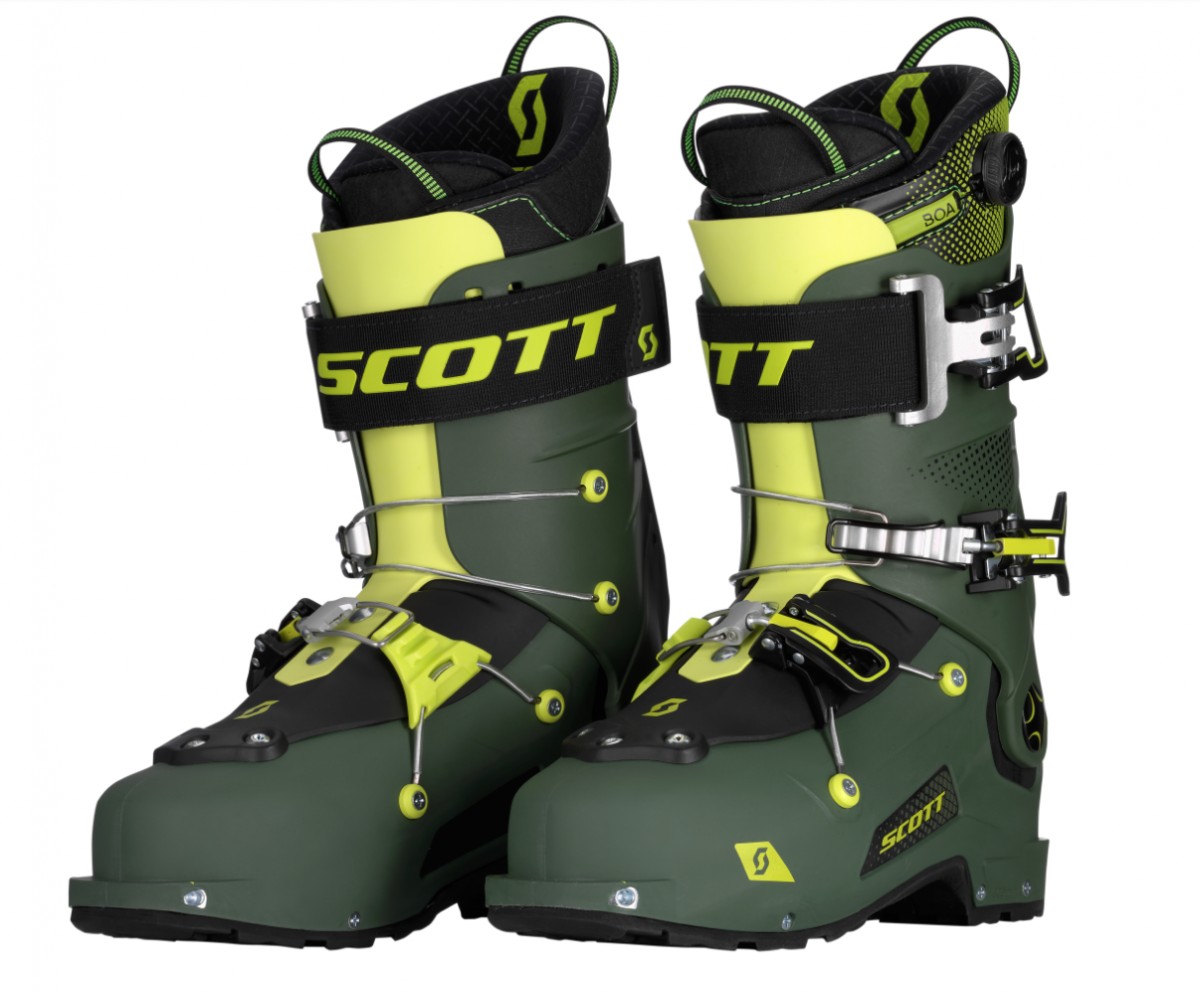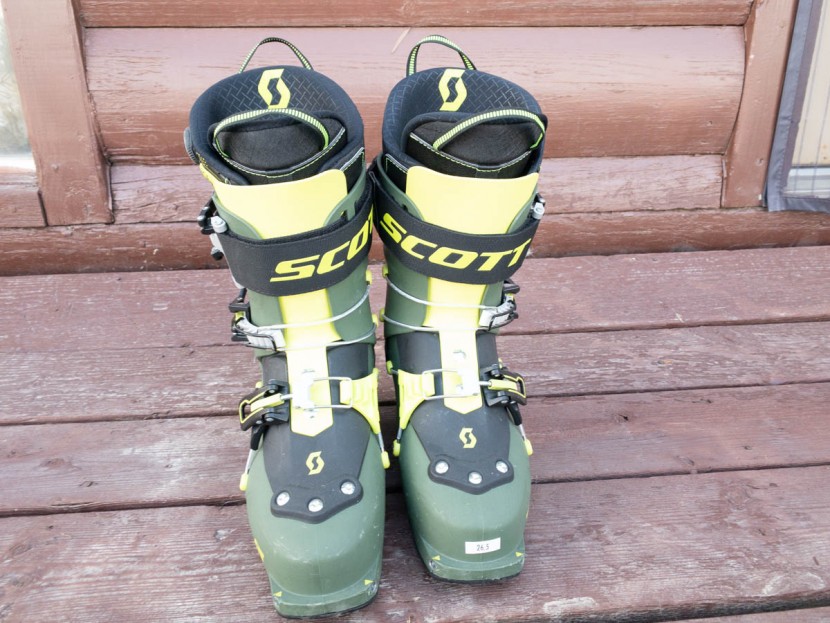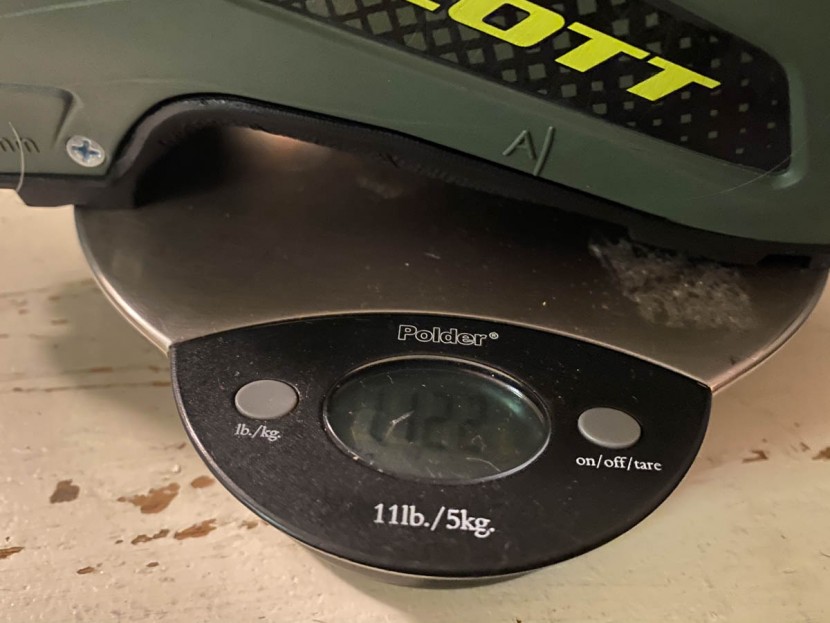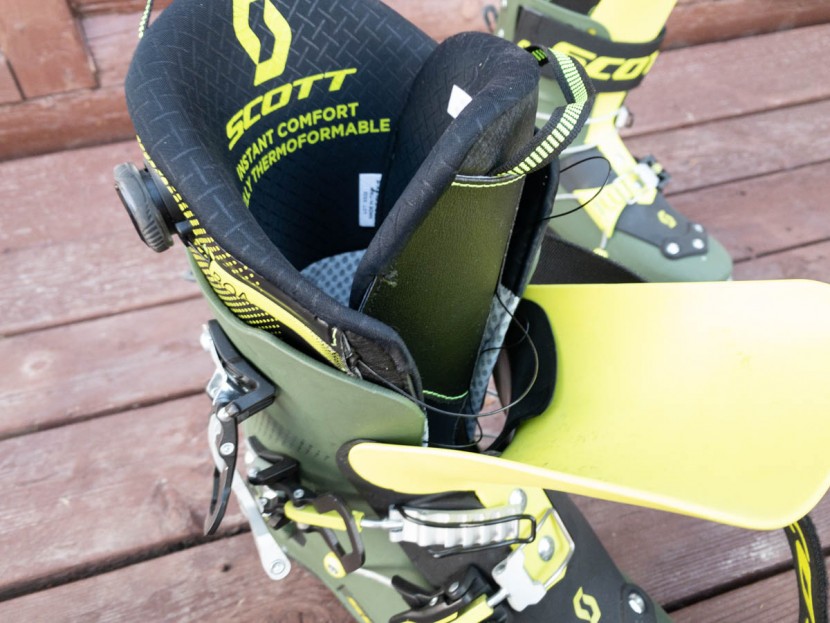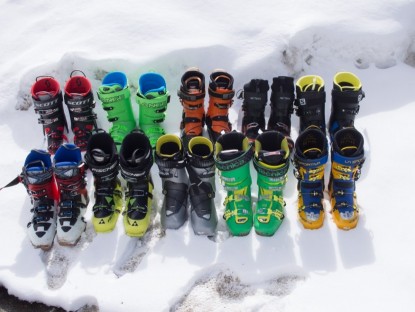Scott Freeguide Carbon Review
Our Verdict
Compare to Similar Products
 This Product
Scott Freeguide Carbon | |||||
|---|---|---|---|---|---|
| Awards | Best All-Around Backcountry Ski Boot | Best Bang for the Buck | Best Lightweight Backcountry Ski Boot | Best Hybrid Boot | |
| Price | $900 List | $899.99 at Evo Compare at 4 sellers | $699 List $524.25 at Backcountry | $619.96 at Amazon Compare at 2 sellers | $365.74 at Evo Compare at 2 sellers |
Overall Score  |
|||||
| Star Rating | |||||
| Bottom Line | If you have wide or high volume feet this is a great choice. You’ll compromise little to nothing as compared to the rest of the market | Whether a newcomer adjusting from the resort or a seasoned expert gunning for 100+ backcountry days a season, this is the most well-rounded AT boot available | Other boots edged this one out of our highest award, but it should definitely be considered for its well-priced value | This is a well-balanced boot for high-volume, high-tempo ski touring and ski mountaineering | Excellent for short climbing sessions interspersed with largely mechanized access backcountry skiing |
| Rating Categories | Scott Freeguide Carbon | Tecnica Zero G Tour... | La Sportiva Vega | Scarpa F1 XT | Lange XT3 120 |
| Downhill Performance (35%) | |||||
| Uphill Performance (20%) | |||||
| Weight (20%) | |||||
| Comfort and Fit (10%) | |||||
| Warmth (10%) | |||||
| Ease of Use (5%) | |||||
| Specifications | Scott Freeguide Carbon | Tecnica Zero G Tour... | La Sportiva Vega | Scarpa F1 XT | Lange XT3 120 |
| Weight per Pair (Size 26.5) | 6 lbs 5 oz | 6 lbs 6 oz | 6 lbs 8 oz | 4 lbs 12 oz | 7 lbs 11 oz |
| Binding Compatibility? | Tech and DIN AT | MNC, Tech | Tech and DIN AT | Tech only | Tech, DIN AT, Grip Walk |
| Measured Range of Motion (degrees) | 55° | 98° | 60° | 108° | 34° |
| Manufacturer Stated Last Width | 101.5 mm | 99 mm | 102.5 mm | 100 mm | 100 mm |
| Weight of One Complete Boot, No Insole | 1432 g | 1445 g | 1473 g | 1076 g | 1750 g |
| Weight of One Boot Shell | 1122 g | 1212 g | 1220 g | 872 g | 1398 g |
| Weight of One Stock Liner, No Footbed | 310 g | 233 g | 253 g | 204 g | 352 g |
| Stated Flex Index | 130 | 130 | 115 | Not Listed | 120 |
| Liner Design | Tongue | Tongue | Tongue | Tongue | Wrap |
| Shell Material | Carbon re-enforced Grilamid | Grilamid | Grilamid | Grilamid | Polyurethane |
Our Analysis and Test Results
Scott's Freeguide Carbon is an all-around, mid-pack ski touring boot for a user with relatively high volume feet. Performance is on par with its closest competitors, and the fit is wider than average.
Uphill Performance
Uphill performance is based on cuff range of motion and friction within that range of motion. Friction usually declines as the boot “breaks in” (this is a good thing). We found the range of motion of the Freeguide to be about average, and certainly adequate. Friction was a little greater than average. It's slowly getting better, but the sturdy liner and robust cuff and tongue limit ankle range of motion, and therefore efficiency, more than similar competitors.
Weight
The Scott Freeguide Carbon weighs 6 lbs 5 oz for the pair. Convention is fast becoming that we share backcountry ski gear weights in grams and per foot. The Freeguide weighs 1432g per boot, on our calibrated, cross-reverenced scale. Further, many people mix and match different liners into their boots and therefore want to know how much the shell alone weighs. The shell weighs 1122g and the liner weighs 310g.
All these numbers are petty competitive with other all-around backcountry ski boots for human-powered action. The liner could be lighter. The vast majority of boots you will be considering are between 1200 and 1500 grams per boot. Lighter than that and the ski performance requires adaptation. More than that and you'll battle lugging them up the mountain. In that range, the Scott is obviously on the upper end of it. You choose this boot for its fit, not for its weight to performance ratio. Other options will perform the same or better and weigh less. But none of them are as well suited to higher volume feet.
Downhill Performance
Ski touring footwear gets better and better, by leaps and bounds. We've used Scott's offerings (including their predecessors branded Garmont) at every step of the way for 10 years now. Every new offering is a huge step up from the previous. They don't update as often as others and they offer fewer offerings than most. On the other hand, when they bring a new product out, like the Freeguide, it is well thought-out and keeps up, at least, with the competitors. The downhill performance of the Freeguide, for the weight, is excellent.
It is stiff in all the right directions (laterally and rearward) with a forward flex profile that approximates the “progressive” flex that is so difficult to accomplish with light and mid weight backcountry boots. The forward flex is competitive and comparable to that of the best products on the market in this same weight range, all only available in the last couple of years. We like skiing downhill in the Scott Freeguide Carbon and you will enjoy it too.
Comfort and Fit
The fit of the Scott Freeguide Carbon is its most polarizing attribute. This is a wide, high-volume product. It is essentially an outlier in this way. If you have average to narrow feet, you will always struggle with the Scott. However, if you have high volume feet you won't do better than the Freeguide. It is almost all alone up there, in terms of backcountry ski boots suitable for wide feet.
We also like the relatively rigid liner (as is the standard now, it is heat moldable) and its closure with Boa cable and dial. Not everyone likes their liners to lace tight, but some do. If you like laced liners, and especially if you like to adjust the tension of your liners through the day, you will love the Scott liner. If you don't like laced liners it is probably best for you to swap them for an aftermarket option; you'll save weight and likely make at least a small upgrade in fit, energy transmission, and durability.
Warmth
Our test team has largely average feet. OSHA would probably come after us if we asked those with extra wide or extra narrow feet to test ski boots. It's hard enough for our iron-footed, average-dimensioned test team to endure new ski boots every other day for a busy test season. What this means is that we put the roomy Scott Freeguide Carbon, for the most part, on feet narrower than it is optimized for. This made for compromised downhill function (we also got them on wider footed testers, and all of us can extrapolate beyond fit issues) but made them very warm and comfy. More than anything, room in your ski boots is what makes for warm feet.
That being said, the thin shell and standard liner aren't especially insulating. All else equal (mainly, fit) the Scott Freeguide insulates about the same as other average ski touring boots. If you have average volume feet, but are very cold most of the time, this Scott with some fit adaptations and performance compromise might yield a very warm solution.
Ease of Use
We had few to no problems with the Scott Freeguide Carbon. We like that it has just three buckles. There isn't even a “power strap”. Other boots in this class will have a total of 5 closures. Scott gets retention with 3/5ths the closures. The uppermost buckle is actually a hybrid. It is a hook-and-loop strap that can be further tightened with the camming action of a buckle. In transitions to short uphill sections, the buckle can be just flipped open. For longer climbs, you will want to loosen the velcro too.
Our only complaint with the usability of the Freeguide is with its rear ski/walk lever. The action is entirely invisible and internal. In certain conditions, every boot buckle and lever is prone to icing up. Other contemporary competitors have moved the entirety of the ski/walk mechanism to the outside of the boot where it can be better cleaned in icing conditions.
Value
The price of the Freeguide Carbon is in line with its close competitors. It isn't appreciably more or less expensive than anything comparable. The construction seems both simple and robust; we had no durability concerns and don't anticipate anything more than typical wear and tear. Further value is the good (or great, if you like the BOA) liner. The stock liner of many boots virtually needs to be replaced. You can replace the liner of the Freeguide, but you won't realize great benefits aside from weight savings.
Conclusion
We can heartily recommend the Scott Freeguide Carbon for high volume feet on the end of legs that enjoy all different flavors of backcountry skiing. These are all-around, well-balanced boots for typical, average human-powered skiing. If you have high volume feet, they are more suited to you than virtually anything else we've discovered.


